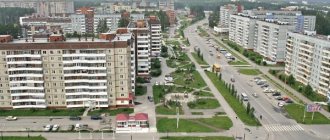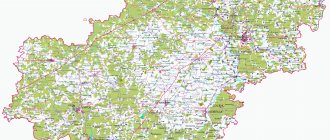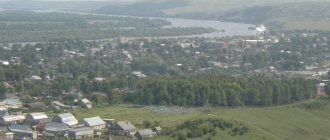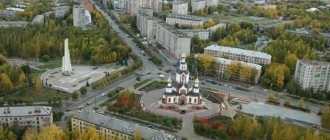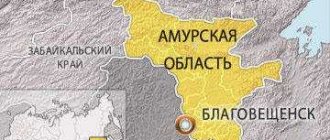Content
- 1 Millionaire cities 1.1 Chelyabinsk
- 2.1 Magnitogorsk
- 3.1 Zlatoust
- 4.1 Ozyorsk (Chelyabinsk region)
- 5.1 Bakal
How to get there?
It’s better to go not through Yuzhnouralsk , but through Varlamovo : the road is not so busy, sometimes completely empty, and the surface is better. But don’t forget the right shoes to knead the mud. ⠀ You need to leave Chelyabinsk along the Ufa Highway , in the Bishkil go left following the sign for Varlamovo . In general, there is a lot of interesting things along that road: from uranium mines to restored shops of gold miners.
Medium-sized cities 20-100 thousand people
Ozyorsk (Chelyabinsk region)
There are other settlements with this name, see Ozyorsk.
Population 79,518 people (2016).
Troitsk (Chelyabinsk region)
There are other settlements with this name, see Troitsk.
Population 75,825 people (2016).
Snezhinsk
Population 50,323 people (2016).
Satka
Population 42,437 people (2016).
Chebarkul
Population 40,612 people (2016).
Kyshtym
Population 37,809 people (2016).
Yuzhnouralsk
Population 37,716 people (2016).
Korkino
Population 35,186 people (2016).
Trekhgorny
Population 32,521 people (2016).
Asha
Population 30,146 people (2016).
Yemanzhelinsk
Population 29,487 people (2016).
Kartaly
Population 28,697 people (2016).
Verkhniy Ufaley
Population 28,267 people (2016).
Ust-Katav
Population 22,627 people (2016).
Small towns up to 20 thousand people
Bakal
Population 19,942 people (2016).
Kusa
Population 17,521 people (2016).
Plast (city)
Population 17,483 people (2016).
Kasli
Population 16,488 people (2016).
Katav-Ivanovsk
Population 16,333 people (2016).
Sim
Population 13,365 people (2016).
Yuryuzan
Population 11,908 people (2016).
Nyazepetrovsk
Population 11,901 people (2016).
Karabash
Population 11,336 people (2016).
Minyar
Population 9,459 people (2016).
Verkhneuralsk
Population 9,321 people (2016).
see also
- Chelyabinsk region
- Cities of Russia
| [ + ] Cities by regions of Russia | |
| Cities of the North-West (NWFD) | St. Petersburg (and its cities) • Leningrad region (historical Staraya Ladoga) • Arkhangelsk region • Vologda region • Kaliningrad region • Karelia • Komi • Murmansk region • Nenets Autonomous Okrug • Pskov region |
| Cities of the Volga region (Volga Federal District) | Bashkortostan • Volgograd region • Kalmykia • Kirov region • Mari El • Mordovia • Nizhny Novgorod region • Orenburg region • Penza region • Perm region • Samara region • Saratov region • Tatarstan • Udmurtia • Ulyanovsk region • Chuvashia |
| Cities of Southern Russia (SFD) | Sevastopol (including Inkerman) • Republic of Crimea • Adygea • Astrakhan region • Krasnodar region • Rostov region |
| Cities of the North Caucasus (NCFD) | Dagestan • Ingushetia • Kabardino-Balkaria • Karachay-Cherkessia • North Ossetia - Alania • Stavropol Territory • Chechen Republic |
| Cities of the Urals (Ural Federal District) | Kurgan region • Sverdlovsk region • Tyumen region • Khanty-Mansi Autonomous Okrug - Yugra • Chelyabinsk region • Yamalo-Nenets Autonomous Okrug |
| Cities of Siberia (Siberian Federal District) | Altai Republic • Altai Territory • Irkutsk Region • Kemerovo Region • Krasnoyarsk Region • Novgorod Region • Novosibirsk Region • Omsk Region • Tomsk Region • Tyva • Khakassia |
| Cities of the Far East (FEFD) | Amur Region • Buryatia • Jewish Autonomous Region • Trans-Baikal Territory • Kamchatka Territory • Magadan Region • Primorsky Territory • Sakha (Yakutia) • Sakhalin Region • Khabarovsk Territory • Chukotka Autonomous Region |
| see also | Cities of the DPR, LPR, Transnistria, South Ossetia • Regions of Russia • Cities of Russia |
Yekaterinburg vs Chelyabinsk: 19 graphs about the main cities of the Urals
https://www.znak.com/2017-02-07/ekaterinburg_protiv_chelyabinska_10_grafikov_o_glavnyh_gorodah_urala
Dmitry Kolezev
Yekaterinburg and Chelyabinsk are the two main cities of the Urals. These are the closest million-plus cities in Russia. The distance between them is less than 200 kilometers, so it’s time to talk about the slow formation of the “Ekaterinburg-Chelyabinsk” conurbation. Of course, in many ways the two cities compete with each other - for human resources, for federal budget funds, for the attention of investors. Znak.com, whose editorial staff loves both cities equally, decided to compare them using several graphs.
First of all, we used Rosstat data. Unfortunately, their database of municipal statistics is a rather inconvenient system, in which numbers are often missing or cannot be obtained due to errors. We selected the most interesting, from our point of view, data that was available. If necessary, they were recalculated “per 1000 inhabitants” and turned into graphs.
Number of inhabitants
Everyone knows that Chelyabinsk is slightly smaller in population than Yekaterinburg. At the end of 2021, Yekaterinburg, according to Rosstat, had 1.47 million inhabitants. Chelyabinsk had a population of 1.19 million. It is interesting that the growth rates of the two cities are almost identical - the increase is about 1% per year.
There is a myth that Yekaterinburg is growing only due to migrants, and Chelyabinsk is growing naturally. In fact, both cities have grown primarily due to migrants in recent years. At the same time, the flow of migrants to Chelyabinsk was no less than to Yekaterinburg, and only in 2015 it sharply decreased.
Natural growth is gradually increasing in both cities. In Chelyabinsk in 2015, the figures for natural and migration growth were almost equal.
Budget size
Now let's look at budget revenues. In general, Yekaterinburg has more money. But Chelyabinsk is getting richer faster. Over ten years, the budget of Yekaterinburg has more than doubled, by 113%. Chelyabinsk's budget increased by more than 2.5 times - by 163%. And although Chelyabinsk’s budget has decreased over the past year, the general trend suggests that sooner or later Chelyabinsk may catch up with Yekaterinburg.
If we recalculate the budget on the basis of “per 1000 inhabitants”, we get this picture:
In terms of one resident, Chelyabinsk is richer than Yekaterinburg.
Roads
Chelyabinsk residents are proud of their roads. Or, at least, they think that they have better ones than in neighboring cities. But, according to statistics, there are more paved roads in Yekaterinburg:
True, in Chelyabinsk the total area of municipal land is almost two times less than in Yekaterinburg. Therefore, if we compare the number of paved roads and the area of the city, it turns out that Chelyabinsk is still “equipped” with better roads.
The statistics are silent about the quality of these roads.
Housing
Now let's look at the total area of living quarters. Over the past nine years, housing area in Yekaterinburg has increased by 24.92%. In Chelyabinsk the growth was 15.31%.
At the same time, if we count per 1000 inhabitants, there is more housing in Chelyabinsk than in Yekaterinburg:
Another interesting graph is the number of square meters of housing commissioned per 1000 residents. In 2013, Chelyabinsk caught up with Ekaterinburg in terms of this indicator (or, more precisely, Ekaterinburg sank to the level of Chelyabinsk), but equality did not last long.
Salary and prices
Let's see what happens to the average salary. In Yekaterinburg it is a quarter more than in Chelyabinsk:
What is the cost of living? Unfortunately, we do not have data for municipalities, only for the region as a whole. Rosstat calculates the cost of a minimum set of goods and services. In 2015, such a set in the Chelyabinsk region was cheaper than in the Sverdlovsk region. But only by 7.66%. Of course, this does not compensate for the difference in salary. If you received the average salary in the Sverdlovsk region and bought such a minimum set, you would have 28,438 rubles left. And in the Chelyabinsk region, in the same situation - only 20,564 rubles.
Another thing is the cost of housing. Housing on the primary market in the Sverdlovsk region is 55% more expensive! Therefore, in the Chelyabinsk region for an average salary you can buy 0.87 square meters of a new apartment. And in Sverdlovskaya - only 0.71 square meters. Accordingly, rental housing is also more expensive.
Shops and cafes
It is well known that Yekaterinburg residents live somehow more hedonistically than Chelyabinsk residents: they have more cafes and shops. Statistics generally confirm this. Here are the number of seats in cafes and restaurants:
As we remember, after purchasing the most necessary things, Ekaterinburg residents have a little more money left than Chelyabinsk residents. So they have money that can be spent in a cafe (if they don’t go broke on housing).
There are approximately twice as many cafes and restaurants in Yekaterinburg. Even adjusting for the number of inhabitants will not narrow this gap that much. True, since 2014 there has been a decline in this area in Yekaterinburg.
By the way, Ekaterinburg is also significantly ahead of Chelyabinsk in terms of canteens and snack bars.
The situation is more complicated with shops. One of the indicators by which Ekaterinburg and Chelyabinsk can be compared is retail space. In 2015 the ratio looked like this:
Social sphere
There are many indicators by which one can evaluate the development of the social sphere of a municipality. We took only one: the number of places in kindergartens per 1000 residents. First, there is a sufficient amount of data. Secondly, it is interesting to see how the authorities of Yekaterinburg coped with the task of eliminating the shortage of places.
It can be seen that Ekaterinburg solved this problem in six years and at the same time overtook Chelyabinsk.
Investing in the future
We can say that today Ekaterinburg is generally a more comfortable and suitable city for living. Business is better developed there and more taxes are collected. Chelyabinsk is poorer and more modest. But what does the future hold for the city? An important indicator is investment in fixed capital. These are investments made by businesses; in the future they will lead to economic development and increased budget revenues.
In absolute terms, Yekaterinburg is, of course, the leader. But the gap between the two cities is not that great. And if we recalculate investments in fixed capital per 1000 residents, we will see that in Chelyabinsk by 2014 they began to invest the same amount as in Yekaterinburg. So the competition between the two “millionaires” continues.
Moved
The editors of Znak.com have people who lived in both cities and can compare them.
Yulia Sorokina, 31 years old, resident of Chelyabinsk (moved from Yekaterinburg).
Many people talk about the luxurious wide roads of Chelyabinsk. This is partly true. The roads are wider, the average speed is higher. And, although recently the quality of the surface has deteriorated significantly, moving around the city is really easier and faster.
But there is one thing that unpleasantly surprised me as a driver. This is the level of respect for fellow movement members. You can, for example, spend twenty minutes trying to get out of a parking lot onto a busy street, and if you stop to let someone through, you will also be signaled from head to toe with a harsh Chelyabinsk obscenity.
When I moved to Chelyabinsk and got a new job, my salary in Chelyabinsk, contrary to expectations, turned out to be higher than in Yekaterinburg. In addition, for the first time in many years she was completely “white”. Considering that real estate and many other things (except perhaps flowers) are cheaper here, it turns out that life is easier. Perhaps that’s why in two years I never regretted moving and almost immediately felt comfortable here.
A special pleasure is the South Ural summer. Although the distance is only 200 km, it is warmer and sunnier here, but the main thing is that there are many more places where you can go to relax. Fresh and salt lakes are so close that you can hit the road after work. On weekends you can go a little further to ponds or into the mountains.
Chelyabinsk is proud of its wide roadsNail Fattakhov
Alexander Polozov, 37 years old, resident of Yekaterinburg (moved from Chelyabinsk).
After six years of living in Chelyabinsk, I know well what I miss in Yekaterinburg, despite the fact that the latter in my eyes is undoubtedly better, more beautiful and more convenient for life, which is why about a year ago I returned here without hesitation.
For example, I really miss the Internet provider with whom I successfully worked for all six years in Chelyabinsk. Ekaterinburg telecom market operators are seriously losing not only in the quality of services provided, but even in organizing interaction with subscribers.
I also miss, for example, the chain of grocery stores where I shopped in Chelyabinsk, finding an acceptable price-quality ratio, including, again, service.
By the way, Chelyabinsk “food” is a topic for a separate conversation, during which you, I think, will understand why, among other things being equal, I would prefer to take a product of Chelyabinsk origin from the counter.
What I am definitely glad about upon returning to Yekaterinburg is the opportunity to breathe cleaner air and walk along cleaner streets, which, in my opinion, are more conducive to walking than in Chelyabinsk. Not to mention the presence of places in the city where you can linger for an hour after work, just comfortably watching city life, people, or how the skyline changes with the movement of the sun and clouds. Well, a big advantage for me is that in Yekaterinburg I almost never have to use a car, while in Chelyabinsk it is an obvious daily necessity.
Yekaterinburg has turned from an industrial city into a trading city. Yaromir Romanov/Znak.com
Don't compete, but cooperate
“To my taste, Chelyabinsk has four key competitive advantages,” says Sergei Ermak, head of the project department at Expert AC. — The first is serious logistics potential. At least, the project of the Yuzhnouralsk TLC turned out to be much more viable than the Euro-Asian International Transport and Logistics Center (the latter has been talked about for about 15 years, but all that has been done is to build a warehouse for 30 thousand square meters).
The second advantage is nature (no matter how strange it may sound). No matter what anyone says, Chelyabinsk lakes are a brand. Yes, they are physically located outside the city, but they are primarily associated with it. There is nothing like this within a radius of 100 km from Yekaterinburg (Sinara, Baltym, Tavatuy, in my understanding, are not competitors to them).
The third advantage is the potential for closer cooperation with Kazakhstan.
Fourth, powerful industrial potential (this is, of course, terrible for the environment, but from the point of view of developing engineering competencies, it’s excellent). Over the past 15–20 years, Yekaterinburg has still gravitated towards a tertiary economy (the city understands that it needs to make a U-turn, but it is not a fact that this will happen).
At the same time, I am convinced that competition between Yekaterinburg and Chelyabinsk for capital is a dead-end strategy. This is too unique a situation - two million people at a distance of 200 km. In my opinion, both cities could gain much more from interaction than from fighting. A conurbation of 3.5–4 million inhabitants in the middle of the Urals, I am sure, would give the territory a powerful modernization push (in agglomerations, even cows are milked better, and this is not a joke).”
